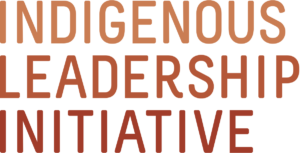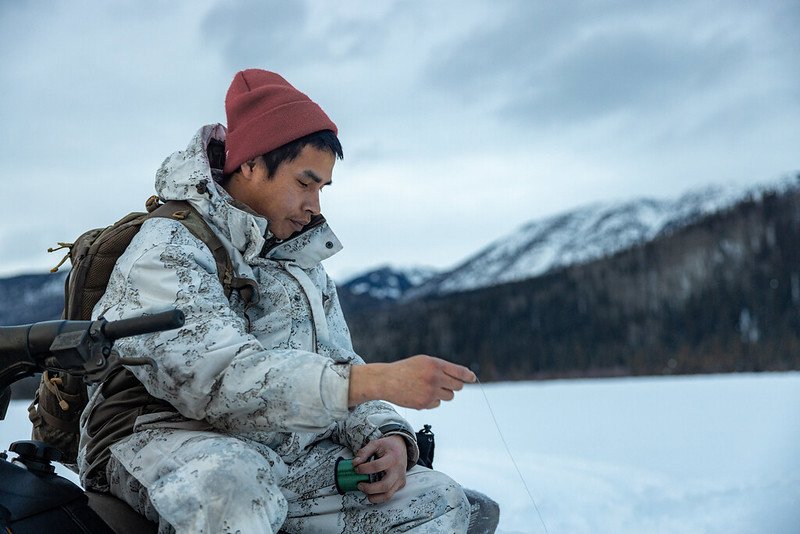Need Hope for the Planet? Look to Indigenous-Led Conservation & Stewardship
Nuxalk Guardian Watchmen, British Columbia. Phot credit: ’Qátuw̓as Brown
By Valérie Courtois
November 17, 2022
Weeks after countries wrap up climate talks in Egypt, the international community will arrive in Montreal for once-in-a-decade deliberations about how to sustain global biodiversity—the animals, plants, food harvests, drinking water, clean air, and other natural systems we all depend on.
It can be hard to remain optimistic in the face of grim scientific reports and political wrangling. But I know there is cause for hope. While the forces driving the destruction of nature are complex, the loss of biodiversity is a problem we can solve. Indigenous Peoples are already doing it.
Eighty per cent of the world’s remaining biodiversity is on lands and in waters managed and loved by Indigenous Peoples. Areas cared for by Indigenous Peoples have been shown to be healthier and have a greater abundance of wildlife and plants than other areas.
That’s true here in what is now known as Canada as well, and Indigenous Nations are working hard to ensure it stays that way. The biggest, most ambitious plans for protecting lands and waters in the country are led by Indigenous Nations. In fact, in our experience, when Indigenous Nations hold the pen on land-use decisions, they protect over 60 per cent of their territories, on average.
K’asho Got’ıne Guardians working inside the Ts'udé Nilįné Tuyeta Indigenous and Territorial Protected Area, Northwest Territories. Photo credit: K’asho Got’ıne Guardians
The rest of the world is starting to catch up with Indigenous ambitions. Canada and over 100 countries have committed to protecting 30 per cent of lands and waters by 2030—no matter what the new Global Biodiversity Framework includes. That’s a start, but they need to do more for the health of the planet. By supporting Indigenous-led conservation and stewardship and closing financing gaps, Canada and other countries can truly protect biodiversity and create a better shared future, where Indigenous Peoples can regain their rightful roles as stewards and decision-makers for their lands and waters.
Because Indigenous Peoples sustain lands and waters not just for our own interests. We do this because we have a responsibility given to us by the Creator to care for these areas for the benefit of everybody. We know that if we take care of the land, the land will take care of us—all of us.
Momentum Is Building
The numbers are eye-opening. Almost 90 percent of protected areas established in Canada in the last two decades have been led by Indigenous Nations. Now scores of new Indigenous Protected and Conserved Areas have been proposed. The number of Indigenous Guardians programs has quadrupled in the last five years. Over 120 Guardians programs care lands and waterscapes across the country.
But the power of Indigenous-led conservation and stewardship transcends numbers. I have had the privilege of visiting many Indigenous territories for my work, and it always inspires me to see the incredible energy growing up from the land and our communities. I talk with leaders who are creating new Indigenous Protected and Conserved Areas, some the size of the size of Switzerland or Costa Rica. I see Elders sharing their knowledge and language with youth. I listen to young people say that becoming a Guardian has helped them recover from addiction and find pride in their identity. I learn about Nations creating good jobs that rely on healthy lands and waters.
All of this adds up to transformative momentum. For people and the land.
In the proposed Dene Kʼéh Kusān Indigenous Protected and Conserved Area, northern British Columbia. Photo credit: Jordan Melograna and Dena Kayeh Institute
Growing Recognition
The success of Indigenous-led conservation has earned growing recognition. The Government of Canada acknowledges that partnerships with Indigenous Peoples are central to its strategy for protecting of 30 per cent of lands and waters by 2030. Prime Minister Trudeau has commented on this repeatedly, including in September when he said: “If we don’t involve indigenous Peoples in every step of the way in protecting climate and biodiversity, we aren’t going to get there.”
The government has also begun supporting IPCAs and Guardians programs, including $340 million in funding announced in 2021 to support IPCAs and Guardians programs. That’s a good start, but so much more can be achieved with long-term funding and innovative financing tools, such as proposed Project Finance for Permanence efforts.
Time to Honour Indigenous Leadership
As the international community gathers in Montreal, they will see that sustaining biodiversity—and healthy communities—is already underway, and they will see that Indigenous Nations are blazing the trail. What we hope to see at COP15 is greater ambition, creativity, and recognition for the Indigenous Peoples who are doing the hard work of making sure we can still live on Planet Earth.
Because we know as Indigenous Peoples—like I know as an Ilnuiskueu or Innu woman—that our survival depends on our lands being healthy. I am a part of my homeland, and that land is a part of me, and what we do to it, we do to ourselves. These are the values Indigenous Peoples offer. These are the values that will make Canada and the world stronger.
The world needs Indigenous Peoples, and we are ready to lead.
Part of the George River Caribou Herd swim near Mushuau-Nipi, Quebec. Phot credit: Valérie Courtois





